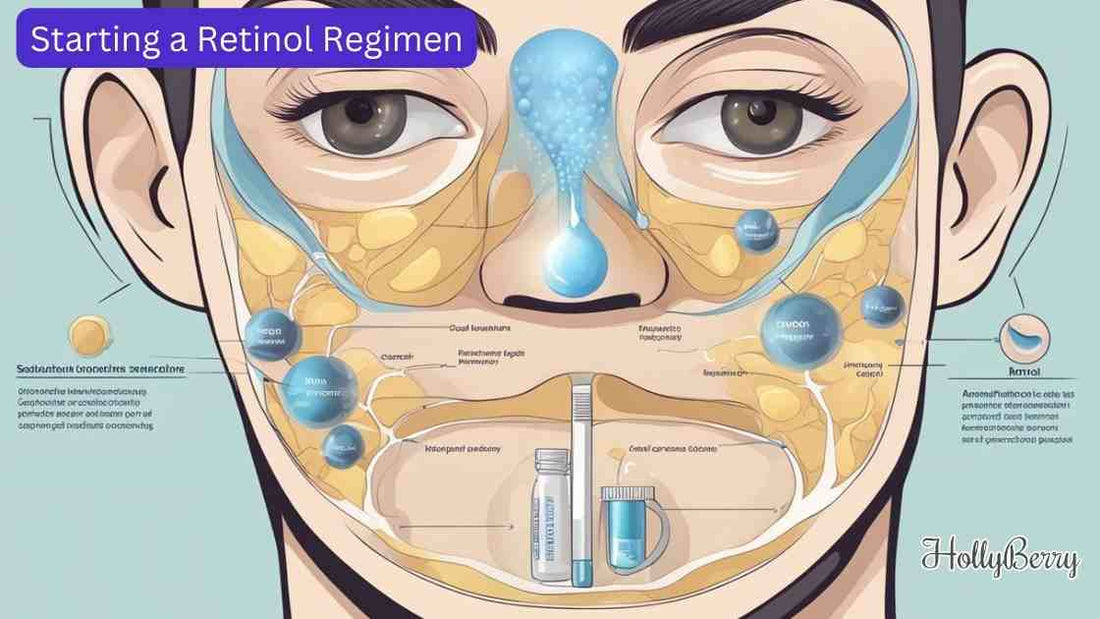
Starting a Retinol Regimen
Share
Tips for Clearer, Smoother Skin
Retinol, a derivative of vitamin A, is a popular skincare ingredient that has been proven to help reduce the appearance of fine lines, wrinkles, and age spots.
It is also known to improve skin texture and tone. However, starting a retinol regimen can be intimidating, especially for those who have never used it before.
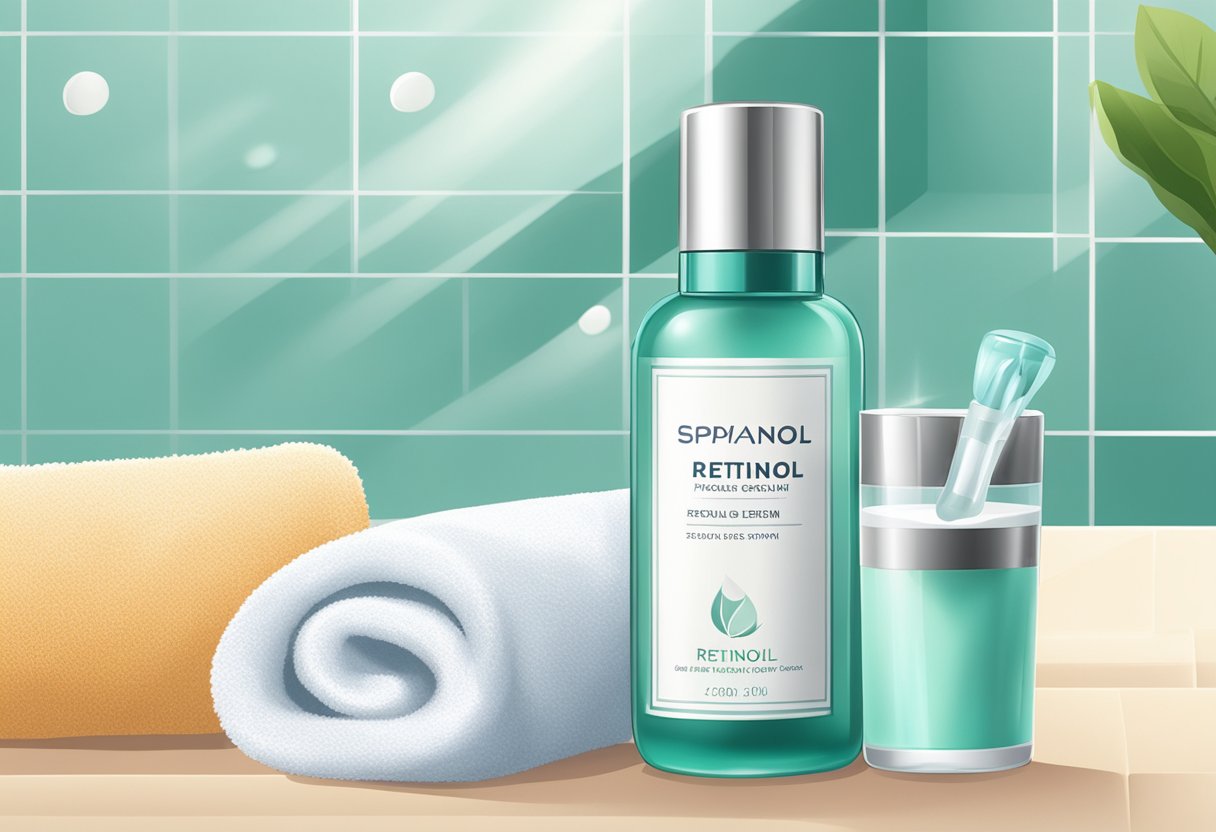
To begin with, it is important to understand that retinol is a potent ingredient and can cause irritation, redness, and flakiness if not used properly.
Therefore, it is recommended to start slow and gradually increase the frequency of use.
According to skincare experts, it is best to start using retinol twice a week and then gradually increase to every other night and eventually every night.
Moreover, it is crucial to choose the right retinol product based on your skin type and concerns.
For instance, those with sensitive skin should opt for a milder retinol product, whereas those with oily skin can use a higher concentration.
It is also essential to follow a proper skincare routine that includes sunscreen during the day as retinol can make the skin more sensitive to the sun. By following these tips, one can start a retinol regimen and enjoy its benefits for healthy, glowing skin.
Understanding Retinol
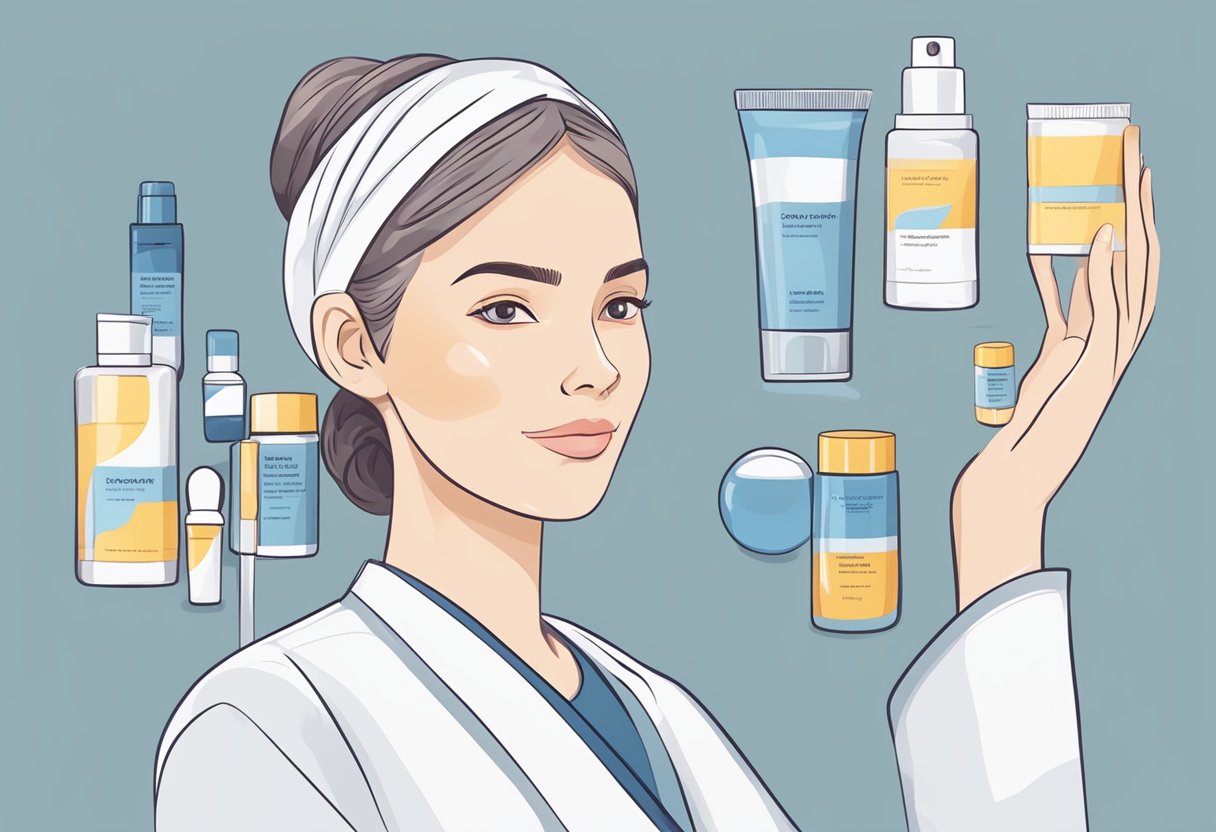
Retinol is a type of vitamin A, which is a fat-soluble vitamin that is essential for healthy vision, skin, and immune system. It is found in animal products such as liver, eggs, and dairy products.
Retinoids are a group of vitamin A derivatives that are used in skincare products to improve the appearance of fine lines, wrinkles, and dark spots. Retinoids work by increasing cell turnover and stimulating collagen production.
Retinol is a weaker form of retinoid and is available over the counter in many skincare products. It is converted into retinoic acid, the active form of vitamin A, in the skin.
Retinyl esters are another type of vitamin A derivative that are converted into retinol in the body. Retinaldehyde is a form of vitamin A that is more potent than retinol and is converted into retinoic acid in the skin.
Retinoid products can be irritating to the skin and cause redness, dryness, and flakiness. It is important to start slowly and gradually increase the frequency of use.
Retinol should be applied at night after cleansing and before moisturising. A pea-sized amount is enough for the entire face. It is important to use sunscreen during the day as retinoids can increase the skin's sensitivity to the sun.
Some retinoid products contain retinyl propionate or hydroxypinacolone retinoate, which are gentler forms of vitamin A derivatives. Pure retinol is the most potent form of vitamin A and should only be used under the guidance of a dermatologist.
In summary, retinol is a vitamin A derivative that is used in skincare products to improve the appearance of fine lines, wrinkles, and dark spots. It is important to start slowly and use sunscreen during the day.
Retinoid products can be irritating to the skin and should be used with caution.
Benefits of Retinol
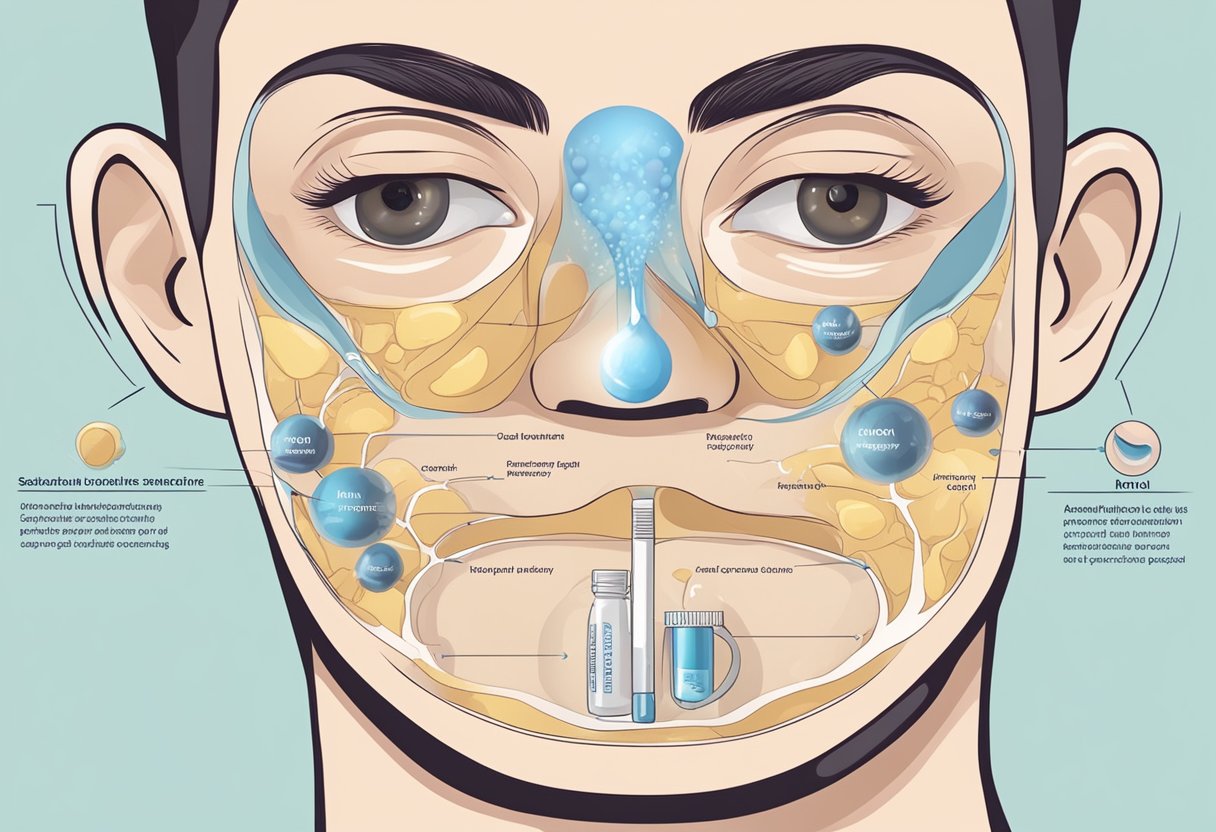
Retinol is a derivative of vitamin A that has been used in skincare for decades. It has gained popularity due to its numerous benefits, making it an essential ingredient in many anti-aging products. Here are some of the benefits of retinol:
Reduces Fine Lines and Wrinkles
Retinol is known for its ability to reduce the appearance of fine lines and wrinkles. It works by stimulating collagen production, which is essential for maintaining skin elasticity.
Collagen is a protein that gives skin its structure and firmness, but as we age, our collagen production slows down. Retinol helps to boost collagen production, which can help to reduce the appearance of fine lines and wrinkles.
Improves Skin Texture
Retinol can also improve skin texture by increasing cell turnover. It exfoliates the skin and encourages the growth of new skin cells, resulting in smoother, brighter, and more even-toned skin.
Treats Acne
Retinol is effective in treating acne by unclogging pores and reducing inflammation. It also helps to regulate sebum production, which can lead to fewer breakouts.
Evens Out Skin Tone
Retinol can help to reduce the appearance of hyperpigmentation, such as age spots and sun damage. It works by inhibiting the production of melanin, the pigment responsible for skin colour, resulting in a more even skin tone.
Firms the Skin
Retinol can also help to firm the skin by increasing collagen production and improving skin elasticity. This can help to reduce the appearance of sagging skin and create a more youthful appearance.
Overall, retinol is an excellent addition to any skincare regimen, especially for those concerned with anti-aging. It can help to reduce the appearance of fine lines and wrinkles, improve skin texture, treat acne, even out skin tone, and firm the skin. However, it is important to start slowly and build up tolerance to avoid any potential side effects.
Retinol and Skin Conditions
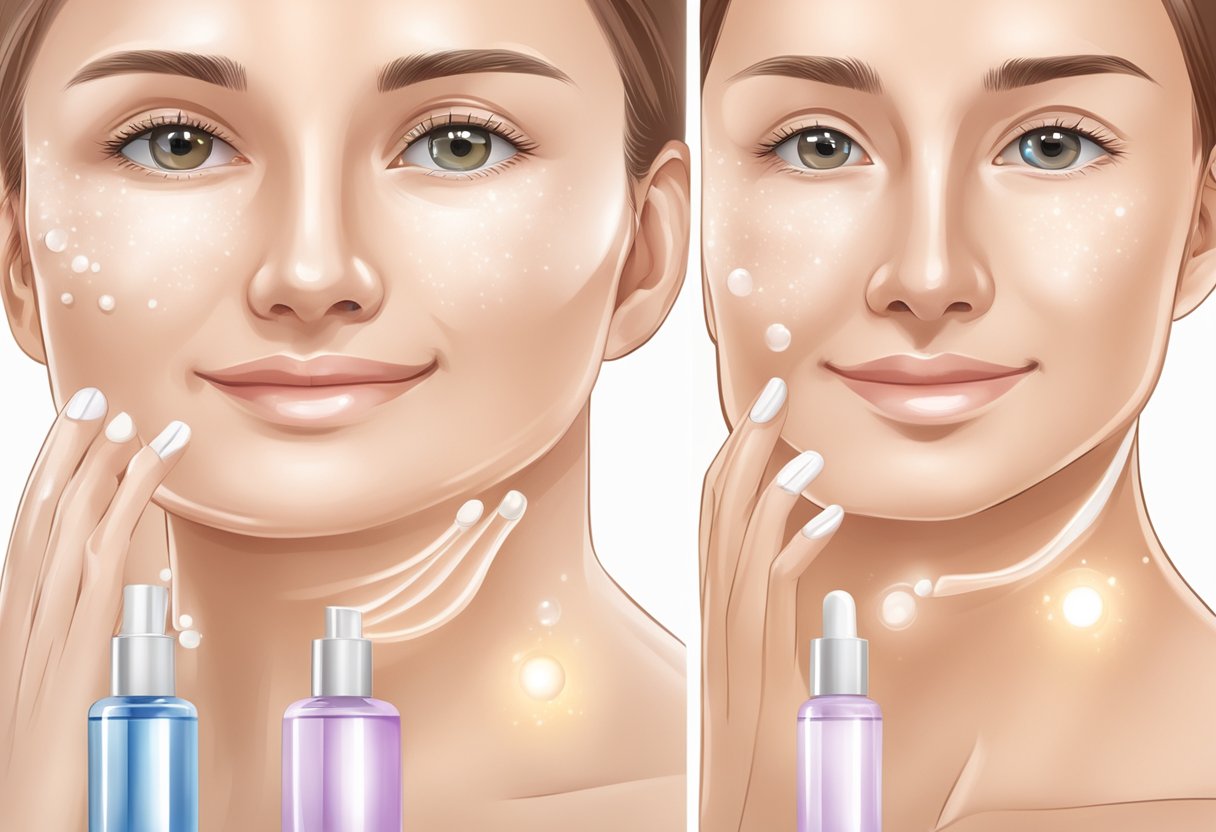
Retinol is a popular ingredient in skincare products that can help improve various skin conditions.
It is particularly effective in treating acne, as it helps unclog pores and regulate sebum production. However, it can also cause irritation, redness, dryness, and peeling, especially when first starting a retinol regimen.
Retinol can also help improve pigmentation and even out skin tone by increasing cell turnover. This can help reduce the appearance of hyperpigmentation and scarring. Additionally, retinol can improve skin texture and reduce the appearance of pores.
When starting a retinol regimen, it is common to experience purging, which is a temporary worsening of acne as the retinol helps to unclog pores. This can be frustrating, but it is important to stick with the regimen and wait for the purging to subside.
It is important to note that retinol can also cause skin irritation, flaking, and inflammation, especially if used too frequently or in high concentrations.
To avoid these side effects, it is recommended to start with a low concentration of retinol and gradually increase the frequency of use as the skin acclimates.
Overall, retinol can be a highly effective ingredient for improving various skin conditions, but it is important to use it properly and be patient when waiting for results.
Incorporating Retinol into Your Skincare Routine

ORDER OUR RETINOL SERUM FROM OUR STORE HERE
Retinol is a powerful ingredient that can help improve the appearance of fine lines, wrinkles, and uneven skin tone. However, it can also be irritating and cause dryness, redness, and flakiness if not used properly. Here are some tips on how to incorporate retinol into your skincare routine:
Start Slowly
To avoid irritation, it's best to start with a lower concentration of retinol and gradually work your way up.
Begin by using a retinol serum once or twice a week, and then gradually increase the frequency of application as your skin adjusts. It's also important to use a pea-sized amount of the product, as using too much can cause irritation.
Adjust Your Skincare Routine
When incorporating retinol into your skincare routine, it's important to adjust the other products you use. Avoid using physical exfoliants and opt for chemical exfoliants like AHAs and PHAs instead. Use a gentle cleanser and toner to avoid stripping your skin of its natural oils.
Make sure to use a hydrating moisturizer to combat any dryness that may occur. Additionally, it's important to use a broad-spectrum sunscreen during the day, as retinol can make your skin more sensitive to the sun's rays.
Consider Using Other Actives
Retinol can be combined with other actives like vitamin C and peptides to enhance its effects. However, it's important to introduce these actives slowly and one at a time to avoid irritation. Vitamin C can help brighten and even out skin tone, while peptides can help improve the appearance of fine lines and wrinkles.
Be Patient
Retinol takes time to work, so it's important to be patient and consistent with your routine. It can take up to 12 weeks to see results, so don't be discouraged if you don't see immediate changes. Additionally, it's important to avoid using other OTC products like chemical peels while using retinol, as this can cause further irritation.
Incorporating Retinol into Your Makeup Routine
Retinol can be used under makeup, but it's important to let it absorb fully before applying any other products. It's also important to use a gentle makeup remover to avoid further irritation.
Overall, incorporating retinol into your skincare routine can help improve the appearance of fine lines, wrinkles, and uneven skin tone. However, it's important to use it properly and adjust your routine accordingly to avoid irritation. With patience and consistency, you can achieve the desired results.
Understanding Side Effects and How to Mitigate Them

When starting a retinol regimen, it is important to understand that there may be some side effects associated with its use. These side effects can include dryness, peeling, redness, skin irritation, flaking, and sensitivity. However, with proper use and care, these side effects can be mitigated.
One of the most common side effects of retinol use is dryness. This occurs because retinol works by increasing cell turnover, which can cause the skin to become dry and flaky.
To mitigate this, it is recommended to use a moisturizer that is specifically formulated for sensitive skin. This will help to keep the skin hydrated and reduce the appearance of dryness.
Another common side effect of retinol use is peeling. This occurs when the top layer of skin begins to shed, revealing new skin underneath.
While this can be uncomfortable, it is a normal part of the retinol process. To reduce the appearance of peeling, it is recommended to use a gentle exfoliator once or twice a week to help remove dead skin cells.
Redness and skin irritation are also common side effects of retinol use. This occurs because retinol can be quite harsh on the skin, especially if it is used too frequently or in high concentrations.
To reduce the appearance of redness and skin irritation, it is recommended to use a retinol product that is specifically formulated for sensitive skin. Additionally, it is important to start with a low concentration of retinol and gradually increase the concentration over time.
Flaking is another common side effect of retinol use. This occurs when the skin becomes dry and begins to shed, resulting in small flakes of skin.
To reduce the appearance of flaking, it is recommended to use a gentle exfoliator once or twice a week to help remove dead skin cells. Additionally, it is important to use a moisturizer that is specifically formulated for sensitive skin to help keep the skin hydrated.
Overall, retinol can be a highly effective skincare ingredient for reducing the appearance of fine lines, wrinkles, and other signs of aging. However, it is important to understand the potential side effects associated with its use and how to mitigate them.
By using a retinol product that is specifically formulated for sensitive skin, starting with a low concentration of retinol, and gradually increasing the concentration over time, it is possible to achieve the desired results without experiencing any significant side effects.
Consulting a Dermatologist
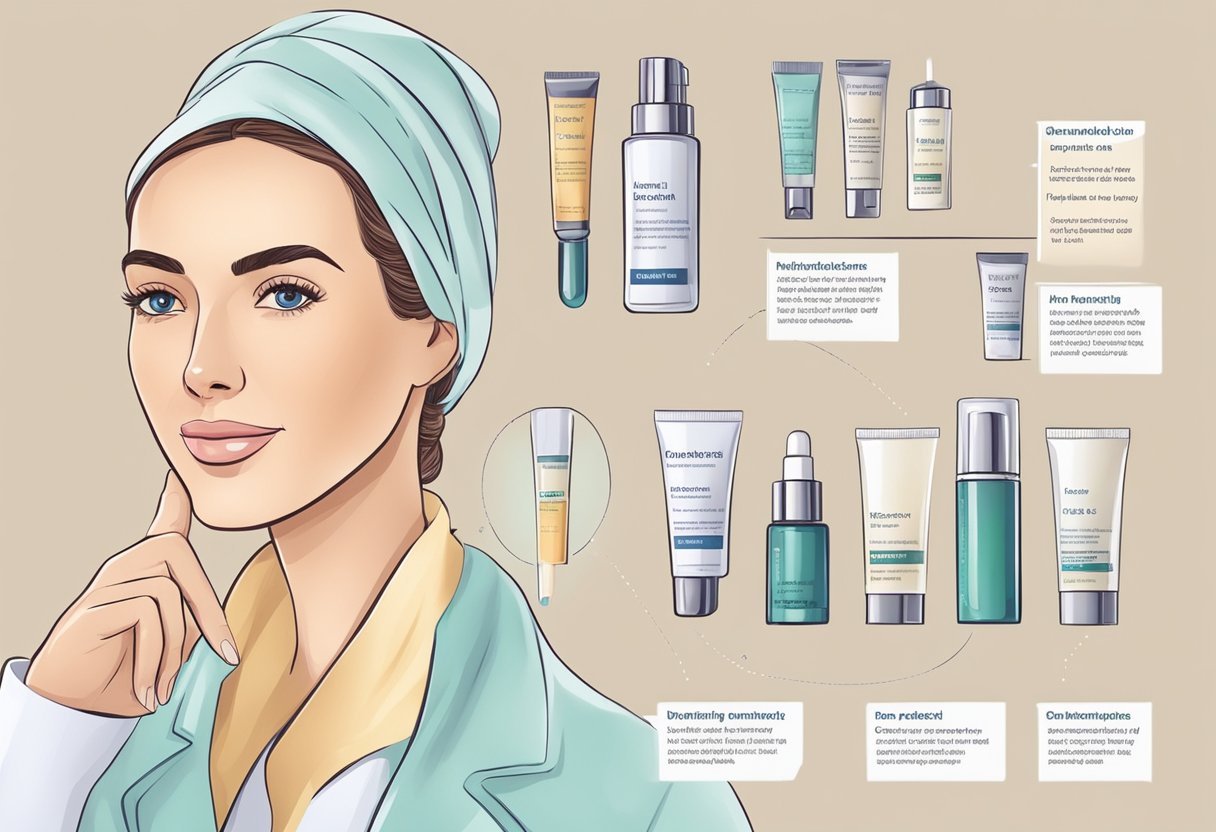
Before starting a retinol regimen, it is highly recommended to consult with a board-certified dermatologist. Dermatologists are medical professionals who specialize in diagnosing and treating skin conditions. They can provide expert advice on whether retinol is right for you, as well as guidance on how to use it safely and effectively.
One of the benefits of consulting with a dermatologist is that they can prescribe prescription-strength retinoids, such as tretinoin (also known as Retin-A). Prescription-strength retinoids are more potent than over-the-counter retinol products, and they may be more effective for treating certain skin concerns, such as acne and fine lines.
A dermatologist can also help assess your skin type and recommend the best retinol product for your needs. They can advise on the appropriate concentration and frequency of use, as well as any potential side effects to watch out for.
Overall, consulting with a dermatologist before starting a retinol regimen can help ensure that you are using the product safely and effectively, and that you are getting the most benefit from it.
Special Considerations
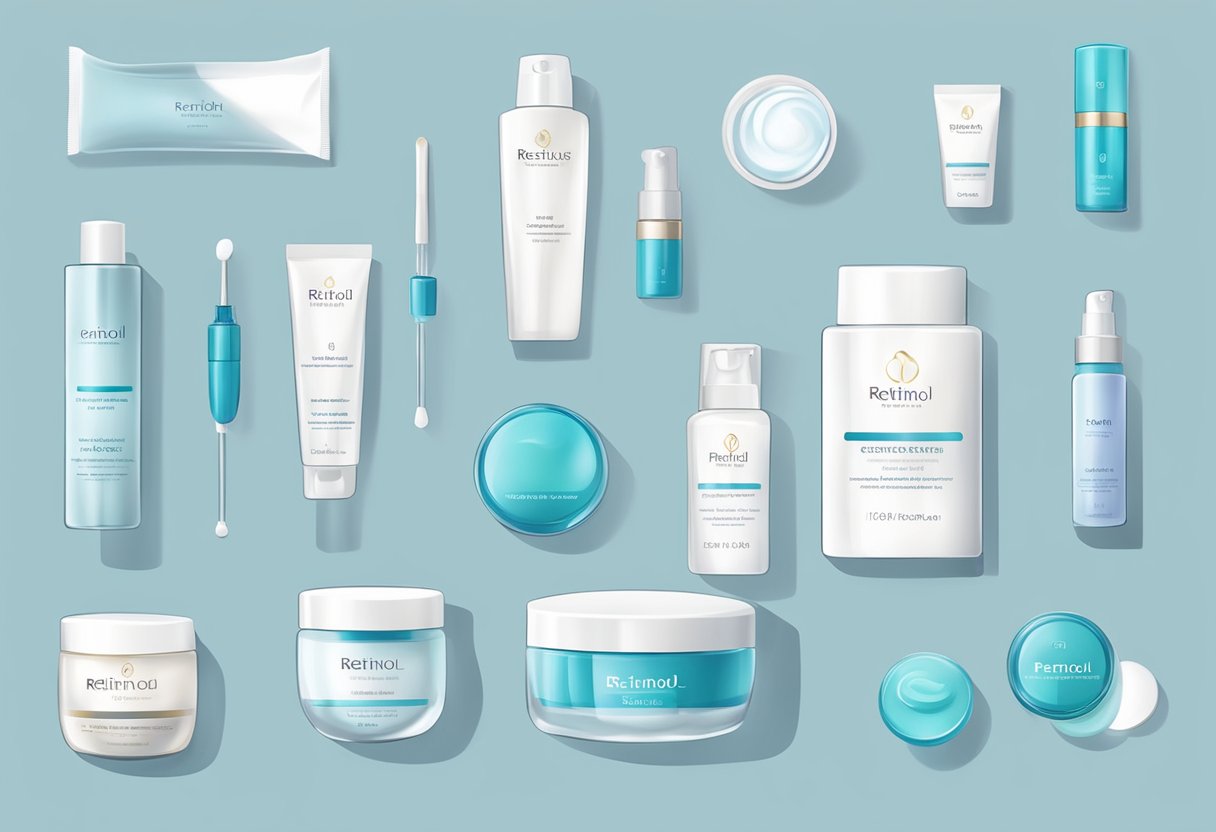
When starting a retinol regimen, there are some special considerations to keep in mind.
Pregnancy and Breastfeeding
It is recommended that pregnant or breastfeeding individuals avoid using retinol products.
This is because retinol can be absorbed into the bloodstream and potentially harm the developing fetus or nursing baby. If you are pregnant or breastfeeding, it is best to consult with your healthcare provider before using any retinol products.
Concentration of Retinol
Retinol products come in varying concentrations, and it is important to choose the right one for your skin type and concerns.
Higher concentrations of retinol can be more effective, but they can also be more irritating to the skin. It is recommended to start with a lower concentration and gradually increase as your skin adjusts.
Sensitivity and Irritation
Retinol can cause sensitivity and irritation, especially in those with sensitive skin. It is important to start slowly and only use retinol a few times a week at first. If you experience redness, peeling, or other signs of irritation, reduce the frequency of use or switch to a lower concentration product.
Sun Protection
Retinol can make your skin more sensitive to the sun, so it is important to use a broad-spectrum sunscreen during the day. This will help protect your skin from further damage and prevent any potential adverse effects from retinol use.
Overall, starting a retinol regimen requires careful consideration and attention to detail. By taking the time to choose the right product and using it correctly, you can achieve smoother, more youthful-looking skin.
Additional Skincare Tips
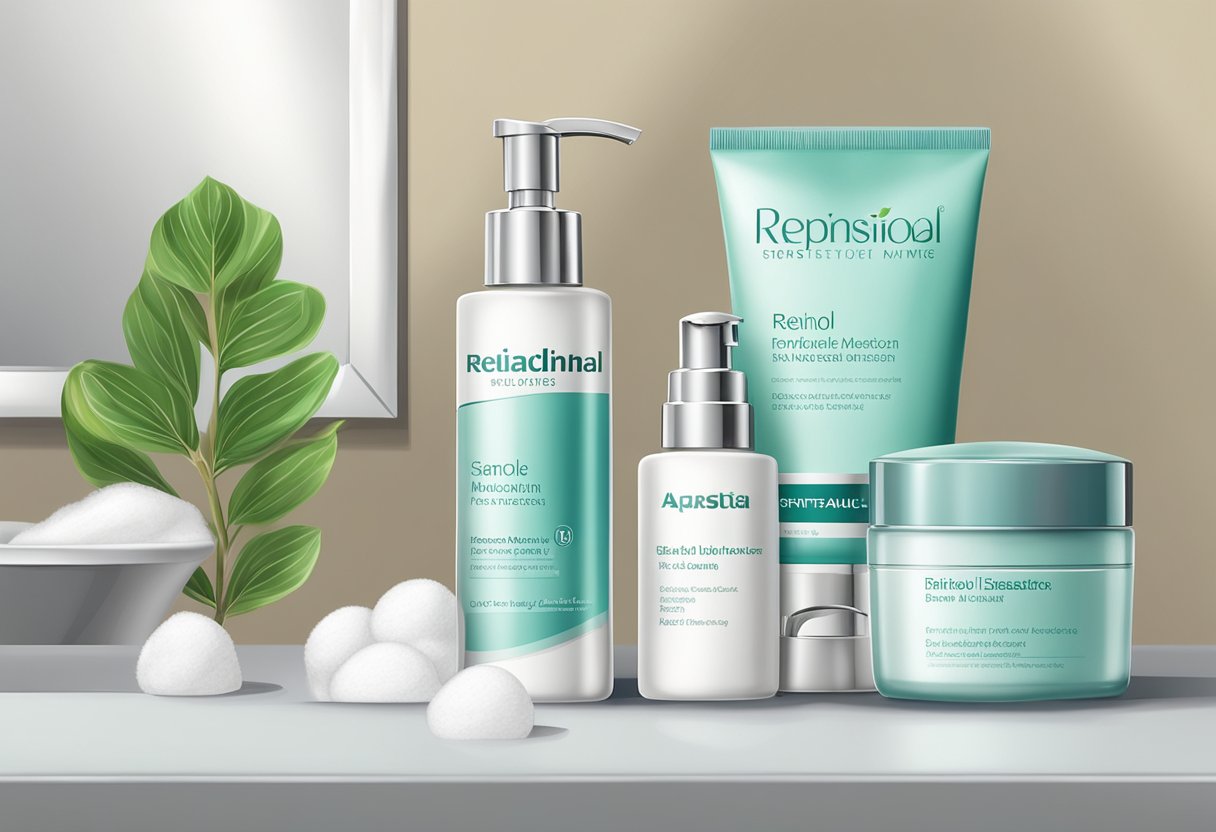
In addition to incorporating retinol into a skincare routine, there are a few additional tips that can help improve overall skin health and maximize the benefits of retinol.
Hydration and Moisturization
Retinol can sometimes cause dryness and irritation, so it is important to keep the skin hydrated and moisturized.
Using a hyaluronic acid serum or a moisturizer with ceramides can help lock in moisture and prevent dryness. Additionally, incorporating facial oils such as rosehip oil can help nourish the skin and provide extra hydration.
Patience and Consistency
Retinol takes time to work, and it is important to be patient and consistent with its use. It can take up to 12 weeks to see visible improvements in skin texture and uneven pigment. It is also important to use retinol regularly, ideally every night, to maintain results.
Centella Asiatica and Beta Hydroxy Acids
Incorporating ingredients such as centella asiatica and beta hydroxy acids can help soothe and calm the skin, especially if breakouts or irritation occur.
Centella asiatica has anti-inflammatory properties and can help reduce redness and irritation, while beta hydroxy acids can help exfoliate the skin and improve skin turnover.
Low Concentration and Eye Cream
Starting with a low concentration of retinol, such as 0.25%, can help minimize the risk of irritation and dryness. It is also important to avoid using retinol around the delicate eye area, as it can cause irritation and sensitivity. Instead, using an eye cream specifically formulated for the delicate eye area can help reduce the appearance of fine lines and wrinkles.
Skincare Tips in Simple Steps
Overall, incorporating retinol into a skincare routine can be a great way to improve skin texture and reduce the appearance of fine lines and wrinkles. By following these simple steps, such as staying hydrated and moisturized, being patient and consistent, and incorporating additional soothing ingredients, it is possible to achieve healthy, glowing skin.
